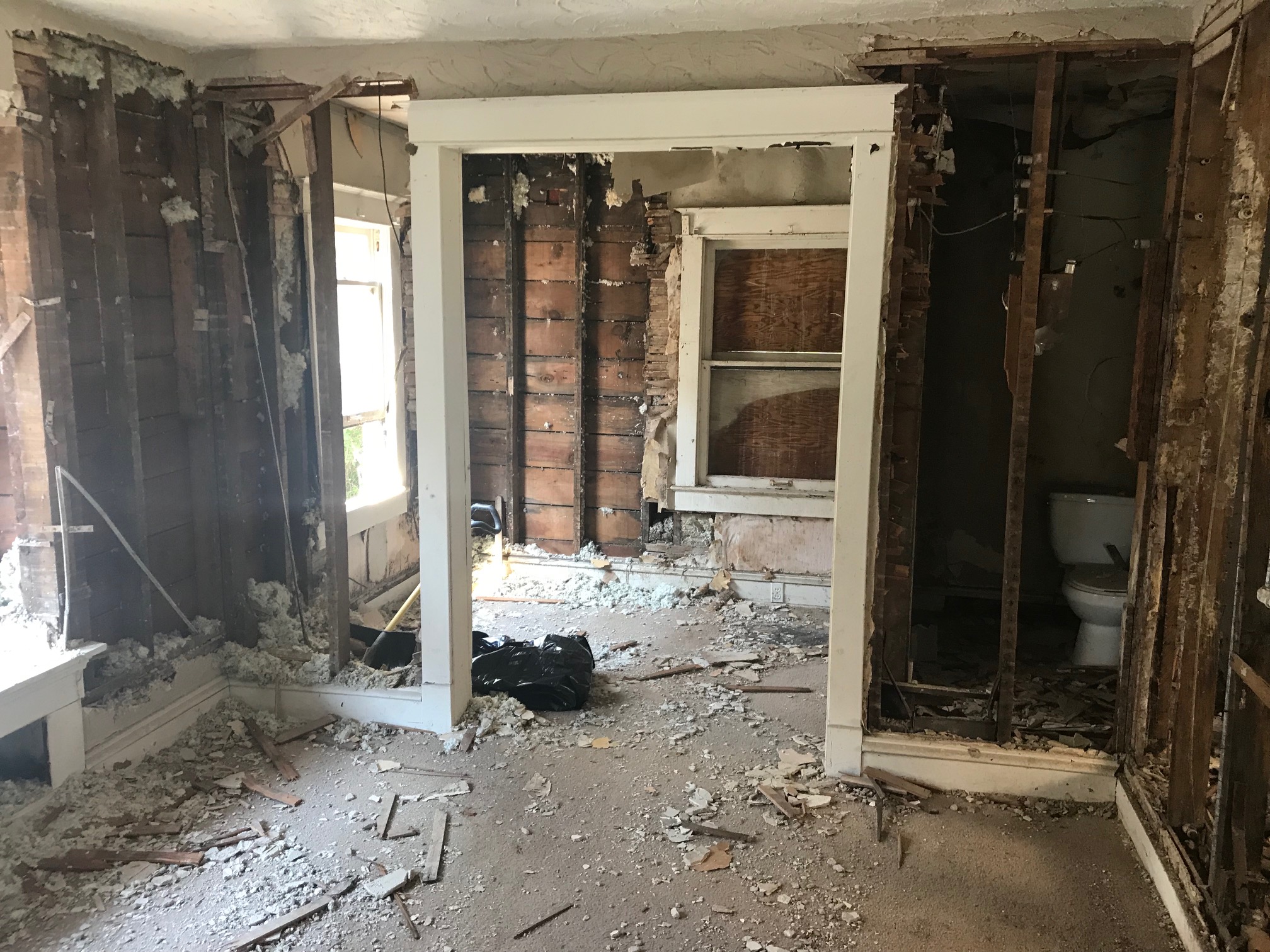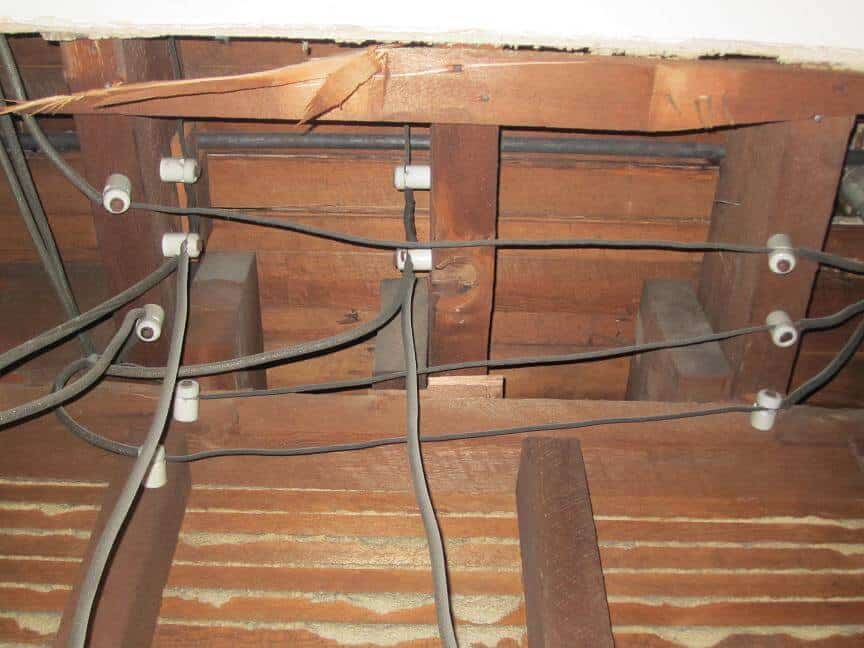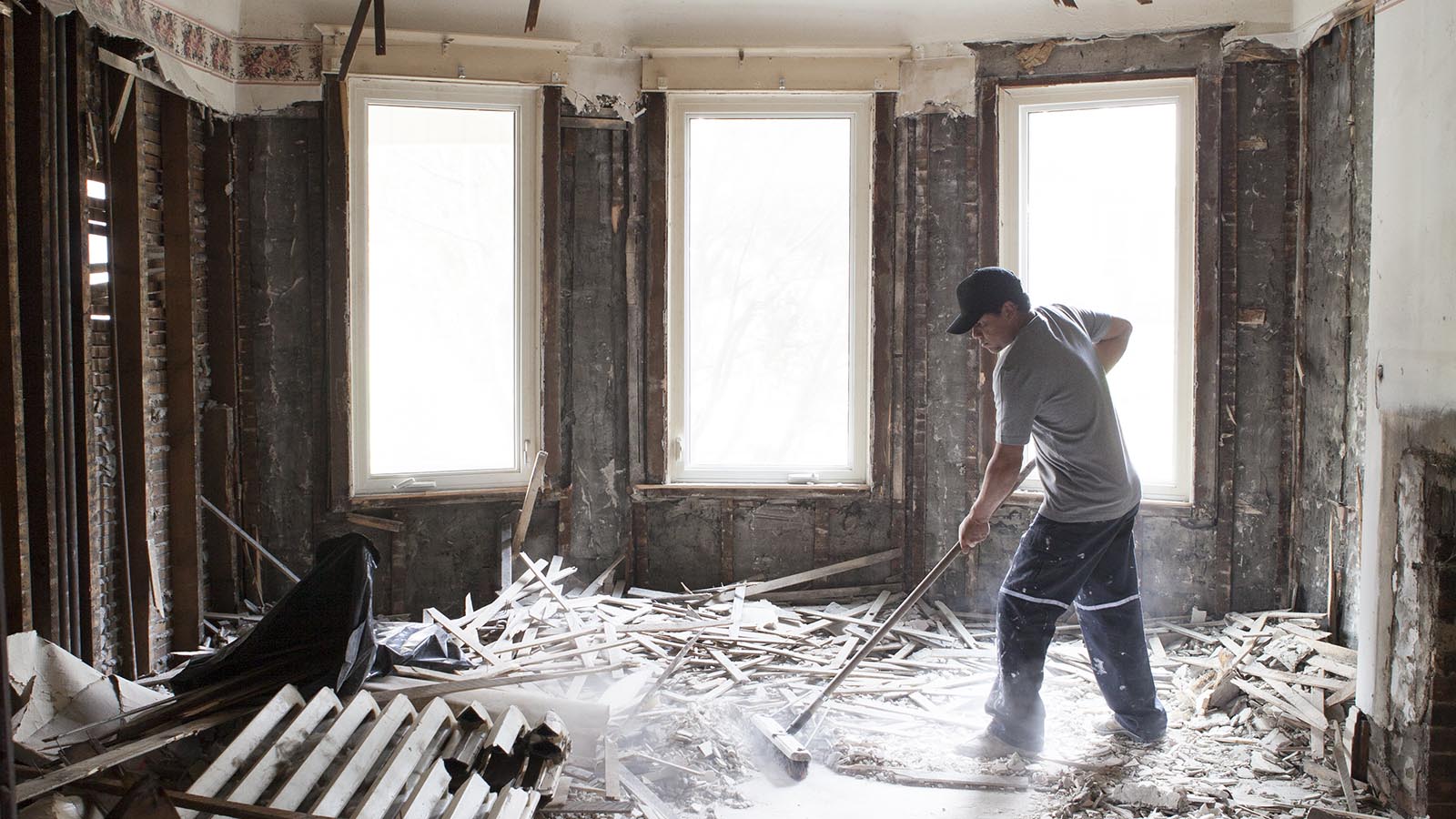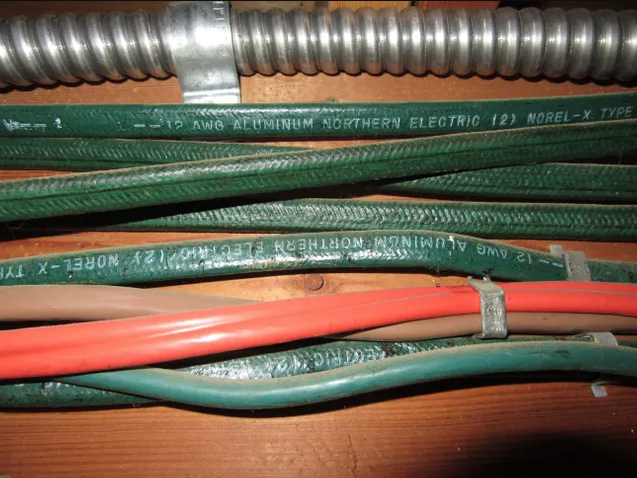House Rewiring
In the house rewiring we're talking about completely doing new electrical installations, and taking out the old electrical installations does not matter if it's knob and tube or aluminum wires as the insurance companies sometimes / most of the time take it as a hazard.
Knob & Tube Hazards
Any of the problems listed below can cause short circuits or overheating. To avoid these problems, you may need to replace your house’s wiring. If in doubt, have an electrical inspection done.
- Insulation over the wiring: If household insulation is installed over knob and tube wiring, a fire is just waiting to break out. The wiring is coated with a rubber/cloth insulation. It needs lots of space to dissipate the heat that builds up when an electrical current is flowing through. If there is no room, because it has been covered with insulation, an extremely dangerous situation is created.
- Excess use: Knob and tube wiring was installed when there were very few electrical appliances in the average home. Nowadays, with TVs, sound systems, computers, washers, and dryers, the system can easily become overheated. Many times, there is an overuse of extension cords, and power bars, as well. Old systems are just not designed to handle the demands for electricity that occur in our modern computerized world. The ground pin (or 3rd prong) on power bars or other electrical items should never be removed to accommodate the two-pin outlets used in Knob & tube wiring.
- Alterations: Most problems occur with Knob & tube wiring because of improper alterations being made to the existing wiring. As it is such an old system, proper replacement parts are not always available, which could be the reason a lot of makeshift handyman fixes are so dangerous. Knob and tube wiring are easily accessed in the basement, which is perhaps the reason why this wiring is often spliced unsafely with modern wiring by home handymen, as opposed to certified electricians.
- Damage: Serious problems can occur when this type of wiring is damaged, either due to wear and tear, handyman fixes, or other types of damage. Porcelain knobs and tubes can crack, and the wires tend to sag and fray over time exposing live wires.
- Brittle insulation: The rubberized cloth insulation on Knob & tube wiring becomes brittle over time and can flake off.
Plugging in a lamp, or even a TV, in your living room or bedroom really does not pose much of a risk when you have Knob & tube wiring. However, in places where there is a possibility of contact with water, for instance, the bathroom or kitchen, this type of the ungrounded system could be extremely dangerous.
Aluminum Wiring Hazards
Between approximately 1965 and 1973, single-strand (solid) aluminum wiring was sometimes substituted for copper branch-circuit wiring in residential electrical systems due to the sudden escalating price of copper. After a decade of use by homeowners and electricians, inherent weaknesses were discovered in the metal that lead to its disuse as a branch wiring material. Aluminum will
become defective faster than copper due to certain qualities inherent in the metal. Neglected connections in outlets, switches, and light fixtures containing aluminum wiring become increasingly dangerous over time. Poor connections cause the wiring to overheat, creating a potential fire hazard. In addition, the presence of single-strand aluminum wiring may void a home’s insurance policies. Inspectors may instruct their clients to talk with their insurance agents about whether the presence of aluminum wiring in their home is a hazard, a defect, and a problem that requires changes to their policy language.
Identifying Aluminum Wiring
- Aluminum wires are the color of aluminum and are easily discernible from copper and other metals.
- Since the early 1970s, wiring-device binding terminals for use with aluminum wire have been marked CO/ALR, which stands for “copper/aluminum revised.”
- Look for the word “aluminum” or the initials “AL” on the plastic wire jacket. Where wiring is visible, such as in the attic or electrical panel, inspectors can look for printed or embossed letters on the plastic wire jacket. Aluminum wire may have the word “aluminum,” or a specific brand name, such as “Kaiser Aluminum,” marked on the wire jacket. Where labels are hard to read, a light can be shined along the length of the wire.
- When was the house built? Homes built or expanded between 1965 and 1973 are more likely to have aluminum wiring than houses built before or after those years.




